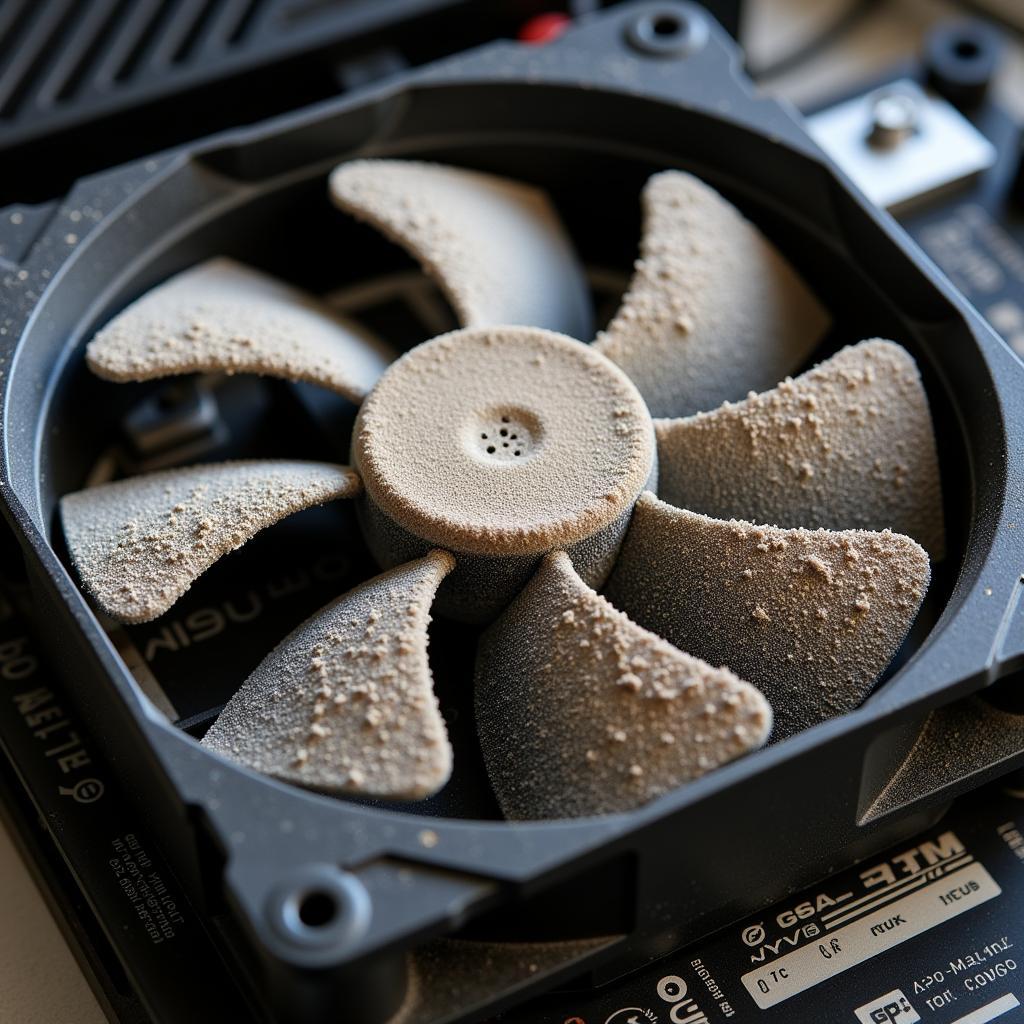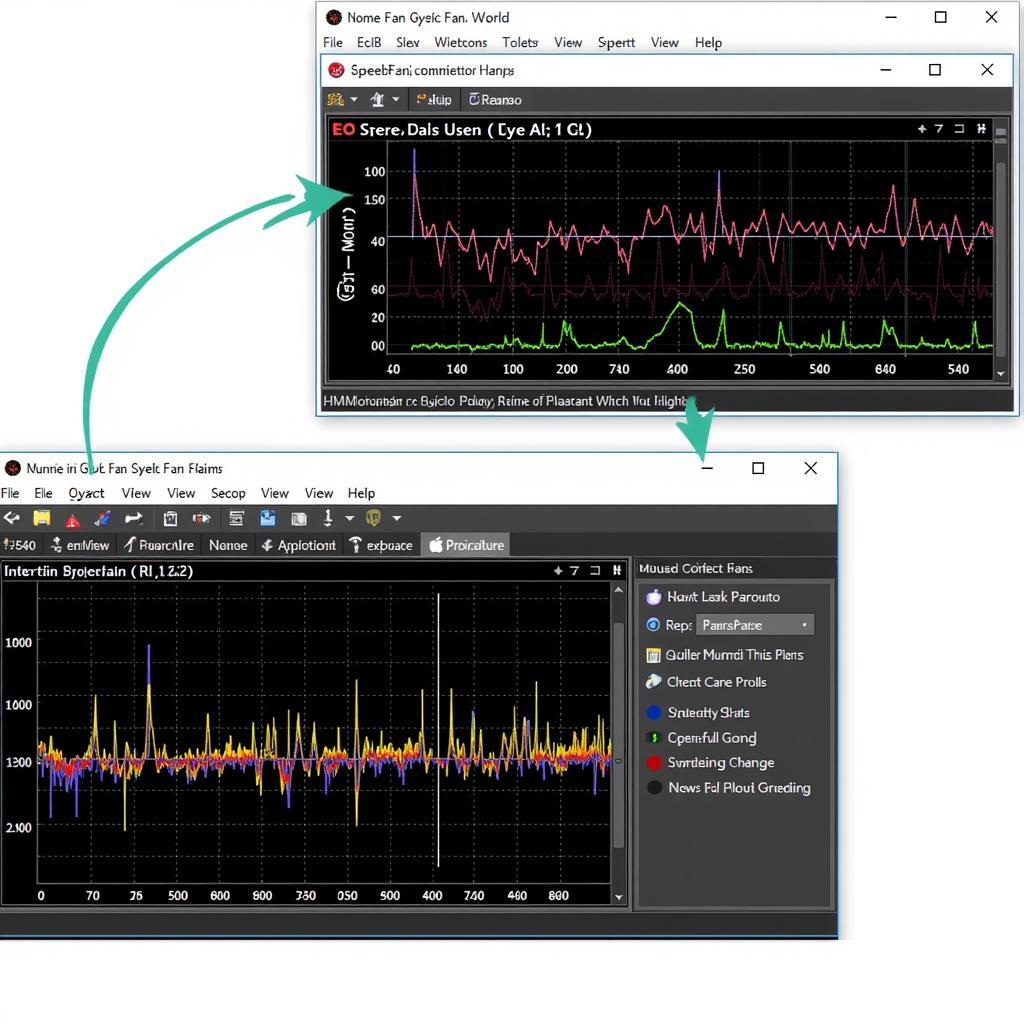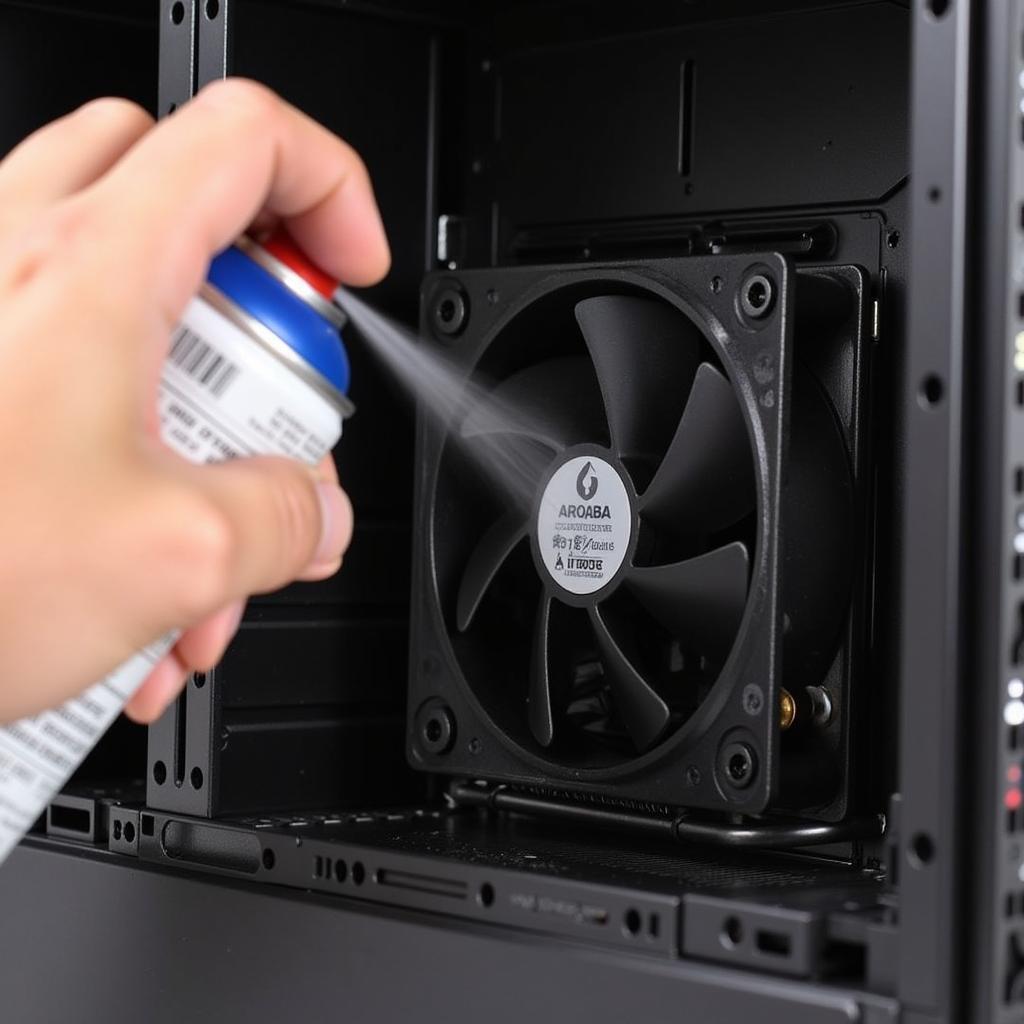Dealing with a malfunctioning fan on your PC can be frustrating, especially if it’s causing overheating issues and disrupting your work or gaming sessions. This guide will provide you with practical solutions to diagnose and fix fan errors on your PC, helping you keep your system cool and running smoothly.
Understanding PC Fan Errors
PC fans play a crucial role in maintaining optimal operating temperatures by dissipating heat generated by components like the CPU, GPU, and power supply. When these fans fail, your system can overheat, leading to performance drops, crashes, and even permanent hardware damage. A noisy fan, a completely silent fan, or a fan that spins erratically are all signs of potential problems.
Common Causes of Fan Errors
Several factors can contribute to fan malfunctions. These include dust accumulation, worn-out bearings, driver issues, BIOS settings, and even physical damage. Identifying the root cause is the first step towards implementing an effective solution.
Dust Buildup
One of the most common culprits is dust accumulation on the fan blades and heatsinks. This hinders airflow and forces the fan to work harder, leading to increased noise and eventual failure.
 Dust Buildup on PC Fan
Dust Buildup on PC Fan
Worn-out Bearings
Over time, the bearings in a fan can wear out, causing it to spin less efficiently or make grinding noises. This is particularly common in older systems.
Driver and BIOS Issues
Sometimes, software issues can also affect fan operation. Outdated or corrupted drivers can prevent the fan from functioning correctly. Similarly, incorrect BIOS settings can also impact fan speed control.
Diagnosing the Problem
Before attempting any fixes, it’s important to pinpoint the source of the problem. Start by visually inspecting the fans for obvious signs of damage or dust buildup. Use monitoring software to check fan speeds and temperatures.
 PC Monitoring Software Displaying Fan Speed
PC Monitoring Software Displaying Fan Speed
Checking Fan Connections
Ensure all fan connectors are securely plugged into the motherboard or corresponding headers. A loose connection can prevent the fan from receiving power.
Fixing Fan Errors on Your PC
Once you’ve identified the cause, you can implement the appropriate solution. Here are some common fixes for fan errors:
Cleaning Dust Buildup
Use compressed air to remove dust from the fan blades, heatsinks, and other components. Be sure to disconnect the power supply before cleaning.
Replacing Worn-out Fans
If the fan is making grinding noises or not spinning at all, it might be time for a replacement. Fans are relatively inexpensive and easy to install.
Updating Drivers and BIOS
Check for updated drivers for your motherboard and chipset. Updating your BIOS can also resolve compatibility issues and improve fan control.
Adjusting BIOS Settings
Access your BIOS settings and check the fan control options. You might be able to adjust fan curves or enable automatic fan control based on temperature.
Preventing Future Fan Errors
Regular maintenance can prevent many fan-related issues. Cleaning your PC regularly and monitoring fan speeds can help you catch problems early on.
 Cleaning PC Fan with Compressed Air
Cleaning PC Fan with Compressed Air
Conclusion
Fixing fan errors on your PC can be relatively straightforward if you follow the steps outlined in this guide. By understanding the common causes and implementing the appropriate solutions, you can keep your system cool and prevent potential hardware damage. Remember, regular maintenance is key to ensuring optimal performance and longevity of your PC components. Ignoring fan errors can lead to costly repairs down the line, so addressing them promptly is crucial.
FAQs
- How often should I clean my PC fans? Ideally, every 3-6 months, depending on your environment.
- Can I use any type of fan as a replacement? Choose a fan compatible with your PC case and motherboard headers.
- What is a good temperature range for my CPU and GPU? Generally, under 80°C under load is considered safe.
- My fan is making a clicking noise. What should I do? This could indicate a loose fan blade or a failing bearing, requiring replacement.
- Can I control my fan speed manually? Yes, using fan control software or adjusting BIOS settings.
- How can I tell if my CPU fan is working properly? Use monitoring software to check its RPM and temperature.
- Is it safe to run my PC without a case fan? Not recommended, as it can lead to overheating.
If you need further assistance, please contact us at Phone Number: 0903426737, Email: fansbongda@gmail.com Or visit our address: Group 9, Area 6, Gieng Day Ward, Ha Long City, Gieng Day, Ha Long, Quang Ninh, Vietnam. We have a 24/7 customer support team.


